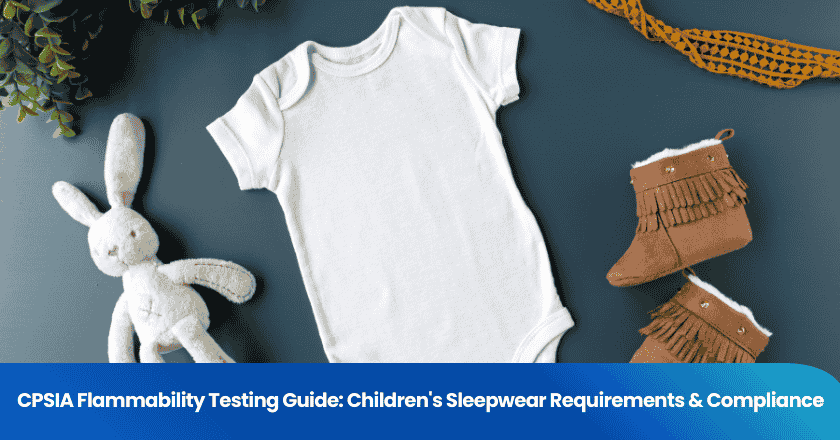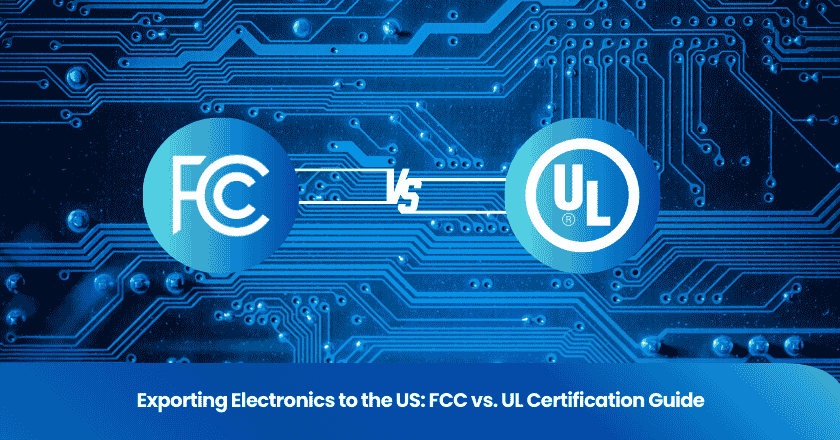
In the arena of the clothing industry, a solid partnership with wholesale clothing manufacturers is the cornerstone of all plans leading to success. The clothing wholesale industry, as a bridge connecting design and market, not only carries the dissemination of fashion trends but also serves as a vital enabler for brand growth. Collaborating with high-quality wholesale clothing manufacturers can bring many advantages to emerging brands, including cost-effectiveness, production efficiency, and rapid market response capabilities, laying a solid supply chain foundation for the brand.
Part 1. Business and Finance
The legal and business requirements for starting a clothing brand mainly involve the registration of the enterprise, the acquisition of licenses and permits, and the establishment and management of corporate finance.
Register your business organization
Select Business Structure
Before establishing a clothing brand, it is necessary to clarify the business structure of the enterprise. This detail determines the ownership, responsibility allocation, and tax treatment of the enterprise. When choosing a business structure, factors such as brand size, financial status, future development planning, and personal risk tolerance need to be considered comprehensively.
Obtain the necessary licenses and permits
After registering the business, it is also necessary to obtain the necessary licenses and permits according to relevant laws and regulations to ensure legal operations. In addition, depending on the specific content of brand operations, specific licenses such as fire permits and environmental permits may also be required. For example, if the brand is involved in the production or sale of specific categories of textiles, relevant product quality certification or production licenses may need to be obtained.
Establish corporate finance
Opening a commercial bank account
After obtaining the necessary licenses and permits, it is necessary to open a commercial bank account for the enterprise for the purpose of fund management and transaction settlement. When selecting a bank, factors such as the quality of service, fee standards, and convenience of the bank should be considered.
Tax and Accounting Management
Tax management: It is necessary to comply with the tax laws and regulations of the country where it is located and declare taxes on time. Professional accountants can be hired or accounting software can be used to ensure the accuracy and compliance of tax processing.
Accounting management: Establish a comprehensive accounting system to record the daily economic activities and financial status of the enterprise. The enterprise understands its own operating conditions and provides data support for decision-making. It is also an important basis for tax declaration.
During the establishment process, it is necessary to strictly abide by relevant laws and regulations to ensure legal operations; it is also necessary to focus on financial management and tax compliance to lay a solid foundation for the long-term development of the enterprise.
Part2. How to identify your niche market?
Identifying a niche market for a clothing brand is a crucial step in successfully positioning and differentiating the brand in competition. The following is a detailed explanation of market research, target audience determination, and brand identity definition:
Market Research
Analyze trends and consumer preferences
In the clothing industry, fashion trends and consumer preferences change rapidly.
Fashion Trend Analysis: Pay attention to international fashion weeks, popular colors, fabric innovations, design elements, etc., to understand current and possible future trends. Analyze competitors' product lines to identify market gaps or innovation opportunities.
Consumer Preference Research: Through methods such as questionnaire surveys, social media analysis, and focus group discussions, collect target consumers' preference information on clothing styles, colors, materials, prices, and other aspects. Brands can more accurately meet consumer needs and enhance product appeal.
Identify the target audience
Clearly defining the target audience is the foundation of brand positioning. Based on market research results, identify and refine the target audience groups, including characteristics such as age, gender, income level, occupation, lifestyle, and values. This helps brands develop more targeted marketing strategies and increase market penetration.
Define your brand identity
Create a unique selling proposition
The Unique Selling Proposition (USP) is the core point that sets the brand apart from its competitors. It should be communicated succinctly and clearly, highlighting the brand's value, advantage, or characteristic to attract the attention of the target audience. For example, emphasizing eco-friendly materials, unique design, high cost-effectiveness, or excellent customer service.
Brand Logo Design and Aesthetics
The brand logo is an important element of brand recognition, and it should reflect the uniqueness and values of the brand.
Logo Design: Choose graphics, fonts, and color combinations that are easy to recognize, memorable, and consistent with the brand concept. The logo should be simple and clear, and can be displayed clearly on various media.
Aesthetic Style: Determine the aesthetic style of the brand, such as modern minimalism, vintage romance, street fashion, etc. This helps to shape a unified brand image and enhance consumer awareness and loyalty to the brand.
Identifying the niche market for clothing brands requires in-depth market research to understand trends and consumer preferences, and to clarify the target audience; defining a unique brand identity, including creating a unique selling proposition and designing a recognizable brand logo and aesthetic style. These steps together form the foundation of brand positioning, laying a solid foundation for the long-term development of the brand.
Part3. Looking for Wholesale Clothing Manufacturers
In order to support their own clothing brands and ensure product quality and supply chain stability, it is necessary to find suitable Wholesale Clothing Manufacturers.
The following are steps on how to research potential suppliers, assess their reputation and reliability, compare pricing and terms, and establish relationships with Wholesale Clothing Manufacturers:
Research potential suppliers
Assess supplier reputation and reliability
Industry background investigation: understand the supplier's business history, market share, and reputation in the clothing industry. Relevant information can be obtained through industry reports, professional forums, and social media channels.
Customer feedback: Contact the supplier's existing or past customers to understand their evaluation of the supplier, including product quality, delivery timeliness, after-sales service, and other aspects.
Field inspection: If conditions permit, personally visit the supplier's production base to observe the production process, equipment status, and quality management system to ensure that the supplier has the ability to produce high-quality products.
Compare pricing and terms
Price comparison: Inquire prices from multiple suppliers and compare the price levels of different suppliers. At the same time, pay attention to the balance between price and product quality, and avoid sacrificing product quality by simply pursuing low prices.
Analysis of Terms: Carefully review the contract terms of suppliers, including payment methods, delivery time, return and exchange policies, and liability for breach of contract. Ensure that the terms are reasonable and in line with the brand's interests.
Establishing relationships with Wholesale Clothing Manufacturers
Negotiating contracts and agreements
Clearly define the needs: Before negotiating with suppliers, clearly define the brand's needs and expectations, including product specifications, quantity, quality requirements, etc.
Contract Details: The rights and obligations of both parties should be specified in detail in the contract to ensure that the content of the contract is clear, accurate, and legally binding. Special attention should be paid to key terms such as product quality standards, delivery time, and payment methods.
Negotiation skills: Use effective negotiation skills, such as thorough preparation, flexibility, and good listening, to obtain the most favorable contract terms.
Establish communication channels
Regular communication: Establish a regular communication mechanism with suppliers, including telephone conferences, video conferences, or on-site meetings, to ensure timely exchange of information and resolution of issues between both parties.
Information sharing: Share brand market plans, sales data, and other information with suppliers to enable them to better understand brand requirements and provide more targeted support.
Feedback mechanism: Establish an effective feedback mechanism to promptly collect and handle suppliers' opinions and suggestions, in order to continuously improve the cooperative relationship.
Through effective communication and cooperation, it can be ensured that the brand receives high-quality products and stable supply chain support, promoting the long-term development of the brand.
Part4. Developing Marketing Plans
Developing a comprehensive marketing plan for your own clothing brand requires combining online marketing with offline marketing strategies to ensure that the brand can reach its target audience in all aspects, enhancing brand awareness and sales performance.
Below is a detailed marketing plan framework:
Online Marketing Strategy
Utilize social media platforms
Platform selection: Choose the appropriate social media platforms based on the preferences of the target audience, such as X, FB, and so on. These platforms have a large user base and a highly active social atmosphere, suitable for brand promotion and product display.
Content creation: Publish high-quality content, including brand stories, new product launches, styling tutorials, user reviews, etc., to attract and retain fans. The content should focus on creativity and interactivity, encouraging users to share and repost.
Advertising: Utilize the advertising features of social media platforms to precisely target the desired audience and increase brand exposure. Advertising needs to be adjusted and optimized based on budget and effectiveness.
KOL/Internet Celebrity Collaboration: Collaborate with opinion leaders or internet celebrities in the fashion industry to promote brands and products through their influence. Forms of collaboration can include sponsored content, live streaming sales, etc.
Create an e-commerce website
Website design: Design an e-commerce website that is aesthetically pleasing, easy to use, and consistent with the brand image. The website should have a clear navigation structure, rich product display, convenient shopping process, and secure payment system.
SEO optimization: Conduct search engine optimization (SEO) on the website to improve the website's ranking in search engines and increase natural traffic. Optimization methods include keyword research, content optimization, link building, etc.
Promotions: Regular promotional activities are held on the website, such as limited-time discounts, discounts for purchases over a certain amount, member-only offers, etc., to attract users to purchase and increase conversion rates.
User Experience: Focus on user experience and provide high-quality customer service, including fast-response online consultation, convenient return and exchange policies, etc., to enhance user satisfaction and loyalty.
Offline marketing strategies
Participation in trade exhibitions and events
Choose exhibitions: Select appropriate trade exhibitions and events to participate based on brand positioning and target market. The exhibitions should have a certain degree of industry influence and target audience concentration.
Booth Design: Design an attractive booth to showcase the brand image and product features. The booth should have good visual effects and interactive experiences to attract the attention of visitors.
On-site activities: Host new product launches, fashion shows, interactive games, and other events at the exhibition site to increase brand exposure and engagement. At the same time, prepare sufficient promotional materials and gifts for communication and interaction with visitors.
Establish connections with industry professionals
Participate in industry conferences: Attend conferences and forums related to the clothing industry, exchange experiences and insights with peers, and stay informed about the latest developments and trends in the industry.
Establishing cooperative relationships: Establish partnerships with industry professionals such as designers, buyers, and distributors to expand business channels and market resources. Through cooperation, we can jointly develop new products, expand into new markets, or enhance brand awareness.
Participation in public welfare activities: Actively participate in public welfare activities related to the clothing industry, such as environmental protection initiatives, charitable donations, etc., to enhance brand image and social responsibility. Participation in public welfare activities helps to establish brand image and enhance consumer trust and goodwill towards the brand.
A comprehensive clothing brand marketing plan should cover both online marketing and offline marketing. By comprehensively utilizing social media platforms, e-commerce websites, trade exhibitions and events, and industry collaborations, it is possible to promote brands and products in all directions, increasing brand awareness and sales performance. Focusing on user experience and service quality is also an important factor in enhancing brand competitiveness.
Part 5. Pricing and Inventory Management
The pricing and inventory management of clothing brands are crucial to the success of the brand. The following will explore in detail the strategies and implementation methods for these two aspects.
Set competitive prices
Understand costs and profit margins
Cost Analysis: Brands need a comprehensive understanding of their production costs, including raw materials, production, transportation, packaging, marketing, and management expenses. This is the basis for pricing, ensuring that the selling price covers the costs and generates a reasonable profit.
Profit margin setting: Set an appropriate profit margin based on brand positioning, market demand, competitive environment, and target profit. The level of profit margin directly affects the selling price of products and the profitability of the brand.
Offering discounts and promotions
Regular Promotions: In order to attract customers, increase sales, and clear inventory, brands can regularly hold promotional activities, such as holiday discounts, seasonal promotions, etc.
Member discounts: Provide exclusive benefits for member customers, such as point redemption, member day discounts, etc., to enhance customer loyalty.
Limited Time Discount: Use limited time discounts to create a sense of urgency and encourage customers to place their orders as soon as possible.
Clothing Management Inventory
Choose Inventory Management Software
Functional requirements: Select the appropriate inventory management software based on brand size and business needs. The software should have functions such as warehousing, outbound, inventory counting, sales forecasting, and data analysis.
Ease of Use: The software interface should be simple and clear, with convenient operation, in order to reduce staff training costs and improve work efficiency.
Data Security: Ensure that the software has strong data security features to protect the information security of the brand and customers.
Seasonal Change Planning
Seasonal Forecasting: Based on historical sales data and market trends, make advance predictions and planning for seasonal products. Ensure sufficient inventory before the peak sales season to avoid stock shortages.
Flexible adjustment: Pay close attention to market changes and sales, adjust procurement plans and inventory structures in a timely manner. Promote unsalable products to quickly clear inventory and reduce capital occupation.
Inventory turnover: Maintain a reasonable inventory turnover rate to avoid capital waste and losses caused by inventory backlog. Accelerate inventory turnover by optimizing supply chain management and improving sales efficiency.
By setting competitive prices, offering a variety of discounts and promotions, and managing inventory scientifically and reasonably, brands can enhance market competitiveness, increase sales and profitability, and achieve sustainable development.
Part 6. Interaction with Customers
As a clothing brand, effective interaction with customers is key to building brand loyalty, enhancing customer satisfaction, and driving business growth.
The following are strategies for interacting with customers from two aspects: establishing customer relationships and implementing loyalty programs:
Establish customer relationships
Provide excellent customer service
Personalized Service: Understanding each customer's shopping habits and preferences, providing personalized shopping recommendations and product suggestions. Through customer data analysis, identifying and meeting the needs of different customers, enhancing the shopping experience.
Professional Consultation: Train employees to possess professional product knowledge and service skills, so that they can accurately answer customer questions and provide professional matching suggestions and solutions.
Convenient shopping process: Optimize online and offline shopping processes to ensure customers can easily find the products they need and complete their purchases. Provide a variety of payment methods and fast logistics and delivery services.
High-quality after-sales service: Establish a comprehensive after-sales service system, including return and exchange policies, repair and warranty services. For customer complaints and dissatisfaction, respond promptly and handle them properly to ensure customer satisfaction.
Encourage customer feedback and reviews
Proactive invitation for feedback: After customers have made a purchase, actively invite them to provide feedback on their shopping experience through email, SMS, or social media. Collect customers' opinions and suggestions to continuously improve products and services.
Establish feedback channels: Set up prominent feedback channels on the brand's official website, social media platforms, and offline stores to facilitate customers to raise questions and suggestions at any time.
Actively respond to comments: For customers' comments and feedback on social media, e-commerce platforms, and other channels, give timely and positive responses and handling. Positive comments can enhance the brand image, while negative comments are valuable opportunities to improve service.
Implement loyalty programs
Designing a reward system
Point Rewards: Establish a point system where customers can accumulate points by shopping, and these points can be used to redeem goods, coupons, or enjoy other privileges. Encourage customers to make multiple purchases and recommend new customers through point rewards.
Membership System: Different levels of membership are introduced, and membership levels are divided according to the amount of consumption or shopping frequency of customers. Members of different levels enjoy different discounts, exclusive gifts, and priority services and other privileges.
Customized Rewards: Provide customized reward plans based on customers' shopping preferences and needs. For example, for customers who frequently purchase high-end products, limited edition items or exclusive designer services can be offered.
Analyze the effectiveness of the project
Data tracking: Utilize CRM systems or other data analysis tools to track the implementation effects of loyalty programs. Pay attention to key indicators such as membership growth rate, repurchase rate, customer satisfaction, etc.
Customer Research: Regularly distribute research questionnaires to member customers to understand their satisfaction with loyalty programs and suggestions for improvement. Adjust the reward system and member privileges based on the research results.
Continuous optimization: Based on data analysis and customer feedback, continuously optimize loyalty programs. Adjust reward ratios, add new reward methods, or optimize member services and other measures to continuously improve customer loyalty and satisfaction.
By providing excellent customer service, encouraging customer feedback and reviews, and designing a reasonable reward system, a solid customer relationship can be established and brand loyalty can be enhanced. Through continuous data analysis and customer research, the interaction strategy can be continuously optimized to better meet customer needs and promote business growth.
Looking back at the key steps in establishing a clothing brand, from legal preparation to market research, to supplier selection, marketing planning, price and inventory management, as well as customer relationship maintenance, each step is crucial.
We encourage every entrepreneur who is interested in the clothing industry to bravely take the first step and embark on this business journey full of challenges and opportunities.
Remember, persistence and adaptability are indispensable companions on the path to brand growth. May your clothing brand stand out in the fierce market competition and shine brilliantly.

Smart Sourcing Content Team
Article by Smart Sourcing Content Team
The Smart Sourcing Content Team is committed to delivering high-quality, easy-to-understand information that helps our audience navigate the complexities of global sourcing. Our team of writers has extensive experience in producing articles across various fields such as procurement, supply chain management, market trends, and industry best practices. We specialize in sectors like apparel, textiles, and consumer goods, providing targeted insights to help businesses in these industries optimize their sourcing strategies and stay competitive.
Grow your business with TradeAider Service
Click the button below to directly enter the TradeAider Service System. The simple steps from booking and payment to receiving reports are easy to operate.



